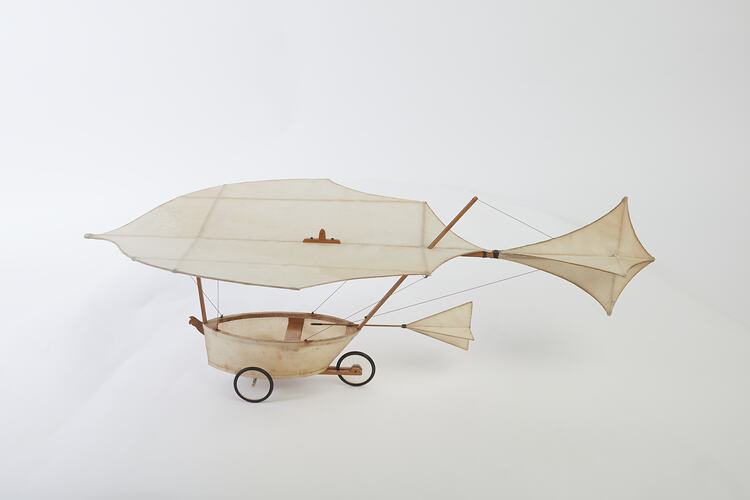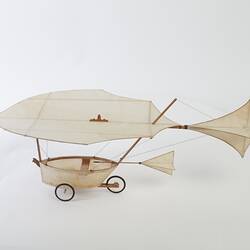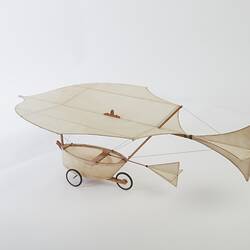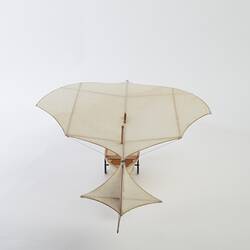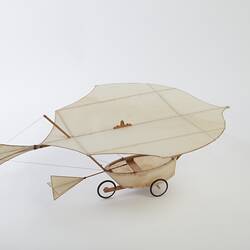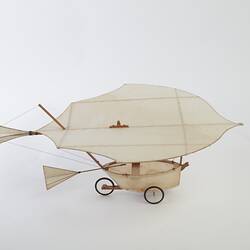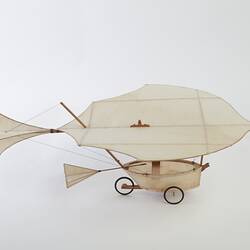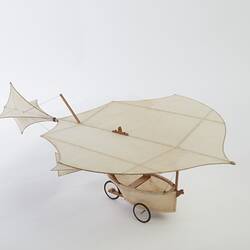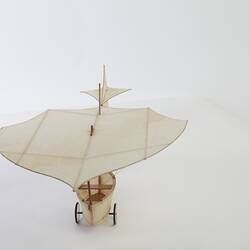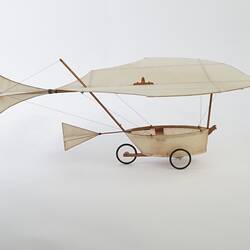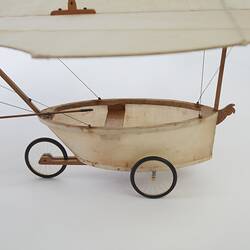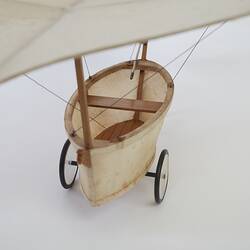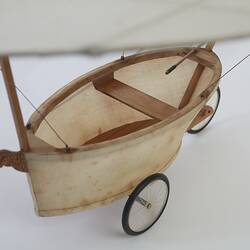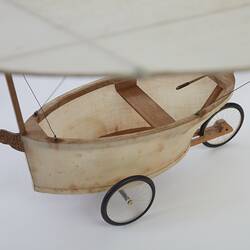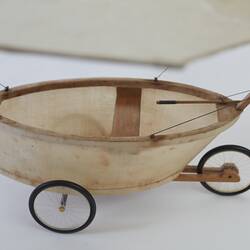Summary
Glider model built by Mr R.D. Ramsay, circa 1962, based on the model made by George Cayley in England, 1852.
George (later Sir George) Cayley was a Yorkshire baronet (1773-1857). His early interest in science and mathematics led to a lifetime of invention and experimentation. He was involved in the establishment of the British Association for the Advancement of Science and built experimental artificial limbs, a hot air engine and from about 1804, models of flying machines.
Cayley was among the earliest to recognise the importance of fixed wings and calculated with some precision the aerodynamics of lift. His 1852 'governable parachute' design was published in the 25 September 1852 edition of Mechanics' Magazine.
It was designed to be released from a balloon to glide back to the ground. It is believed that no full-scale version was built in Cayley's lifetime but in 1973 a reproduction was built for a television programme in the UK which flew successfully under tow. This design featured a fixed tailplane with separate moveable rudder for stability, a feature of later successful powered flying machines.
Model History
This model of Cayley's 1852 'governable parachute' was commissioned by the Museum and built by Mr R.D. Ramsay. It was delivered in 1962.
Physical Description
Model glider with cream base and three wheels, two at the front and one at the back. Flat top cream wing/sail section and two flared tails, the smaller of which is attached to the base.
More Information
-
Collecting Areas
-
Acquisition Information
Purchase
-
Modelmaker
-
Designer of Item Modelled
-
Classification
-
Category
-
Discipline
-
Type of item
-
Overall Dimensions
565 mm (Length), 350 mm (Width), 220 mm (Height)
'Width' is model wingspan, 'Length' is model length from nose to tail, 'Height' is overall model height while resting on its wheels.
-
Keywords
